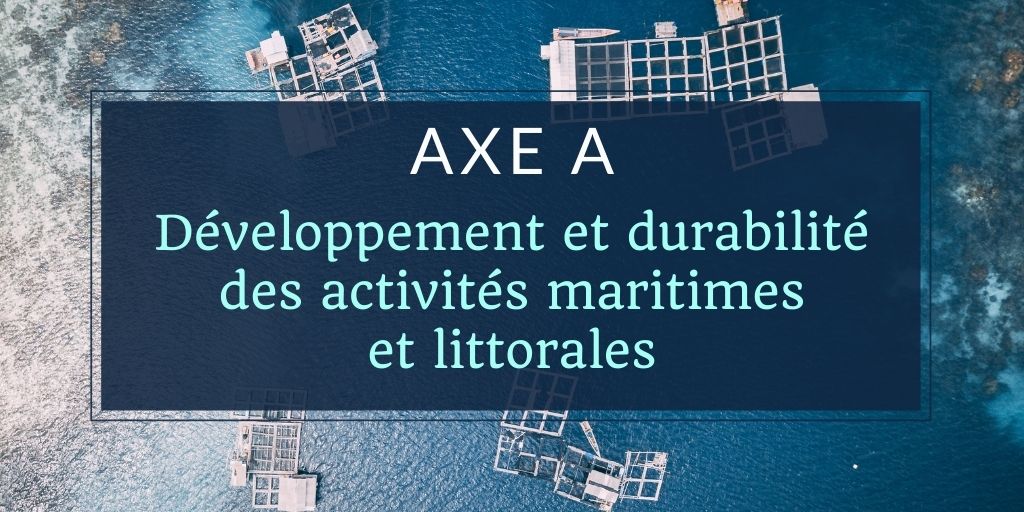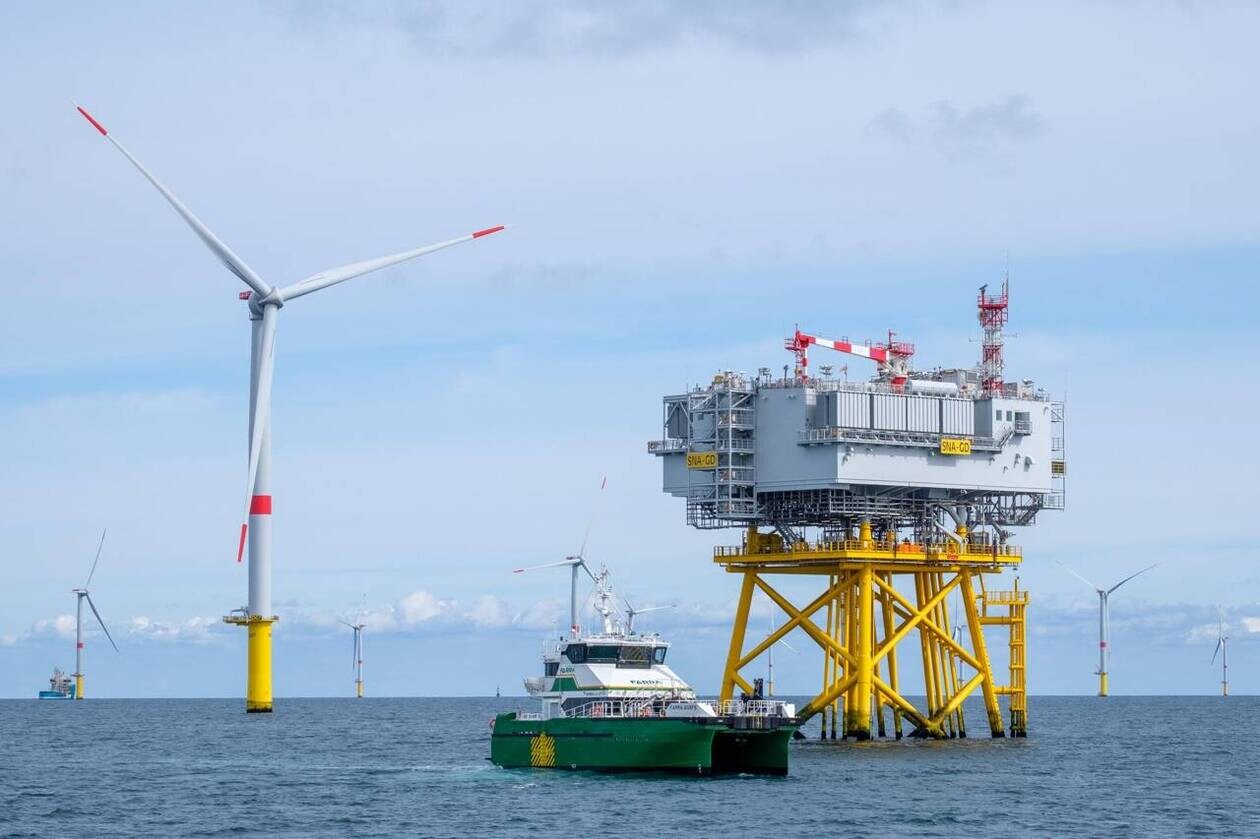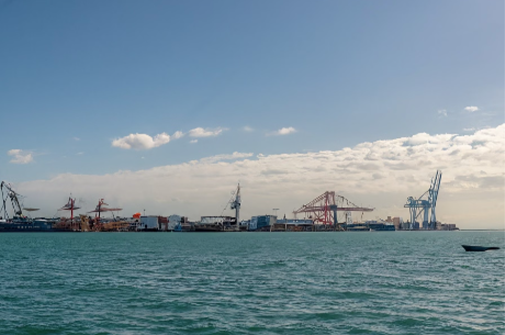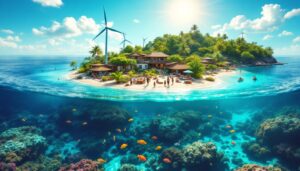Navigating towards a sustainable future requires questioning traditional maritime practices. Faced with challenges such as climate change, pollution and the decline in fishery resources, it is imperative to adopt innovative and responsible strategies. These approaches encompass not only the use of environmentally friendly technologies, but also the promotion of a blue economy that values marine biodiversity and encourages sustainable fishing practices. In this context, it is crucial to involve all stakeholders, from governments to businesses and local communities, in order to guarantee responsible and sustainable navigation for future generations.
| Maritime strategies | Description |
| Circular economy | Promote the recycling and reuse of maritime resources to reduce waste. |
| Renewable energies | Expand the use of wind and solar energy to power maritime operations. |
| Reduction of emissions | Implement technologies to reduce greenhouse gas emissions from ships. |
| Conservation of ecosystems | Establish protected maritime areas to preserve marine biodiversity. |
| Training and awareness | Train maritime stakeholders in sustainable practices and environmental protection. |
| Technological innovation | Invest in green technologies to improve the efficiency of maritime operations. |
- Reduction of greenhouse gas emissions – Adopt clean propulsion technologies.
- Optimization of maritime routes – Use advanced navigation systems to minimize fuel consumption.
- Crew training – Raise staff awareness of sustainable and ecological practices.
- Use of renewable energy – Integrate solar, wind and tidal energy on ships.
- Waste management – Implement recycling and waste reduction systems on board.
- Protection of marine ecosystems – Avoid sensitive areas and adopt sustainable fishing practices.
- International partnerships – Collaborate with other countries for joint regulations and initiatives.
- Technological innovations – Invest in research to develop sustainable solutions.
- Environmental certification – Adopt recognized standards to ensure responsible navigation.
- Circular economy – Promote the reuse and reuse of resources in the maritime sector.
Table of Contents
ToggleMaritime strategies for a sustainable future

The establishment of sustainable practices in the maritime sector is essential to preserve the importance of marine resources. A harmonious approach between technological innovation and respect for the environment remains crucial.
L’blue economy focuses on the sustainable development of activities in the maritime sector. It promotes economic actions that do not compromise the marine biodiversity. To go further in conservation and responsible management, the initiative of the National Association of Coastal Elected Officials and the French Maritime Cluster is proving promising. (https://www.meretmarine.com/fr/marine-marchande/le-cluster-maritime-francais-et-l-association-nationale-des-elus-des-littoraux-s-unissent-pour)
Encourage thetechnological innovation in the field of navigation and the implementation of projectsrenewable marine energy is a priority. Marine renewable energy, such as wind power, tidal current and thermal power, offers environmentally friendly solutions to reduce greenhouse gas emissions.
Ethical aquaculture and the sustainable resource management Marine resources must be prioritized to limit the negative impacts of fishing activities and guarantee the long-term health of ecosystems. To understand the challenges and prospects for improvement in European fisheries, consult recent analyzes on European fishing.
The fight against marine pollution represents a major challenge. Adopting innovations such as biodegradable materials, reducing single-use plastics and effectively managing marine waste contribute to a healthier environment.
Strategies such as implementing protected areas and the promotion of maritime ecological tourism are also essential to raise awareness among the public and economic players about the importance of preserving marine ecosystems.
By integrating these different practices, it is possible to navigate towards a sustainable maritime future. This requires collective commitment and a desire for change to protect our oceans for future generations.
Technological innovations and sustainability
THE maritime strategies play a crucial role in protecting the environment marine and in promoting a sustainable future. To effectively navigate towards this goal, it is essential to adopt innovative and ecosystem-friendly practices.
One of the major approaches consists of integrating renewable energies in the maritime sector. The use of offshore wind turbines and propulsion systems based on hydrogen fuel cells represents a significant step towards reducing CO2 emissions. These technologies not only reduce the carbon footprint of ships, but also promote a blue economy.
The establishment of marine protected areas is also an effective strategy for preserving marine biodiversity. These areas play a vital role in providing refuge for endangered species and helping to maintain healthy marine ecosystems. Sustainable management of these spaces is essential to ensure their long-term effectiveness.
Technological innovation is another essential pillar. The use of underwater drones and advanced sensors allows us to better understand and monitor marine ecosystems. These tools provide valuable data to assess the health of the oceans and identify areas requiring rapid intervention.
The initiatives of ocean cleanup are also central to combating marine pollution. Projects like deploying nets to capture plastic waste in ocean gyres illustrate the importance of innovation in protecting our seas.
To discover concrete examples of sustainable maritime strategies, explore the initiatives described here. By integrating these approaches, we can collectively contribute to the preservation of our precious marine resources.
International partnerships for ocean conservation
One of the essential strategies for a sustainable maritime future is based on the establishment of international partnerships for the preservation of the oceans. Cooperation between nations makes it possible to strengthen efforts to protect marine ecosystems, fight pollution and conserve biodiversity. These collaborations also facilitate the sharing of knowledge and technological innovations in favor of responsible maritime practices.
Initiatives such as planning the national maritime space of Vietnam show the importance of coordinating efforts locally and globally. This planning is essential to manage marine resources in a balanced manner and ensure their long-term sustainability.
THE support from EU member states to a maritime industrial strategy shows the commitment of governments to the promotion of new marine technologies and the improvement of infrastructure. This includes the development of cleaner propulsion technologies, energy optimization and reduction of GHG emissions.
Besides the technological aspects, it is also crucial to raise public awareness about the importance of sustainable resource management. Maritime ecological tourism and ethical aquaculture are areas where good practices can greatly contribute to the preservation of the oceans.
Maritime strategies for a sustainable future must also include the promotion ofblue economy. Encouraging industries to adopt sustainable and innovative practices helps ensure the protection of marine resources while stimulating economic growth. Thus, the promotion of the blue economy in the south is a convincing example of the efforts necessary to achieve this objective.

Frequently Asked Questions
Key strategies include optimizing shipping routes, adopting energy-efficient technologies, reducing greenhouse gas emissions and implementing sustainable fishing practices.
Technology can help by improving navigation through artificial intelligence-based management systems, developing ships with alternative propulsion such as renewable energy, and using sensors to monitor environmental impact in real time.
Regulations include international agreements like MARPOL for the prevention of pollution from ships and the United Nations Convention on the Law of the Sea, which establishes guidelines for the management of maritime resources.
Businesses play a crucial role by adopting responsible practices, investing in innovative solutions, and collaborating with sustainability advocates to influence favorable policies and regulations.
Those in the maritime sector can get involved by joining initiatives to reduce waste, supporting research into green technologies and participating in awareness and education programs on maritime issues.









